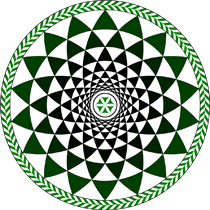Prof.
Ken Andersen
(European Spallation Source AB)
10/07/2015, 09:00
The European Spallation Source is currently under construction in Lund in the South of Sweden. Once fully operational in the early 2020's, ESS will be the world's leading neutron source for condensed-matter studies. The facility will be co-located with the MAX-IV high-brightness synchrotron and is being designed and constructed in partnership with a network of labs and universities distributed...
Werner Press
(IEAP, University of Kiel, Germany)
10/07/2015, 09:40
Neutron scattering data [1] representing rotational tunneling from CH4 & 0.25% O2 have been reanalyzed. They were taken at the time-of-flight spectrometer IN5 of the ILL with a wavelength of λ=13 Å. At a temperature T = 60 mK the sample was fully converted and consisted of a single spin species (A-methane). A-methane in phase II is characterized by just one tunneling...
Dr
Joachim Wuttke
(Forschungszentrum Jülich)
10/07/2015, 12:00
In some fields of research, data analysis is routine, either relying on the formal apparatus of hypothesis testing, or resulting in rock-solid conclusions that convince without further ado.
In other fields, however, including several neutron scattering techniques, data analysis appears to be more an art than exact science, with fit quality to be visually assessed by the experienced eyes, and...
Prof.
Piotr Pierański
(Poznań University of Technology, Poland)
10/07/2015, 12:30
As a rule, the scientific papers describing phenomena occurring in the nonlinear systems are illustrated with lots of plots. If the system in question is oscillating, the papers contain figures presenting the shape of the oscillations indicating what happens to them, when motion of the system evolves from the regular to the chaotic one. Sometimes the papers present also Fourier spectra, in...
Prof.
Piotr Zieliński
(Institute of Nuclear Physics PAN, Kraków)
10/07/2015, 12:50
A distribution of relaxation times results in relaxation describable by formulae more complex than a single decreasing exponential function. A known example is the stretched exponential function
u(t)=exp(-(t/τ)α), (1)
encountered in systems of very different nature starting from mechanical strain, electric and magnetic polarisation through...

